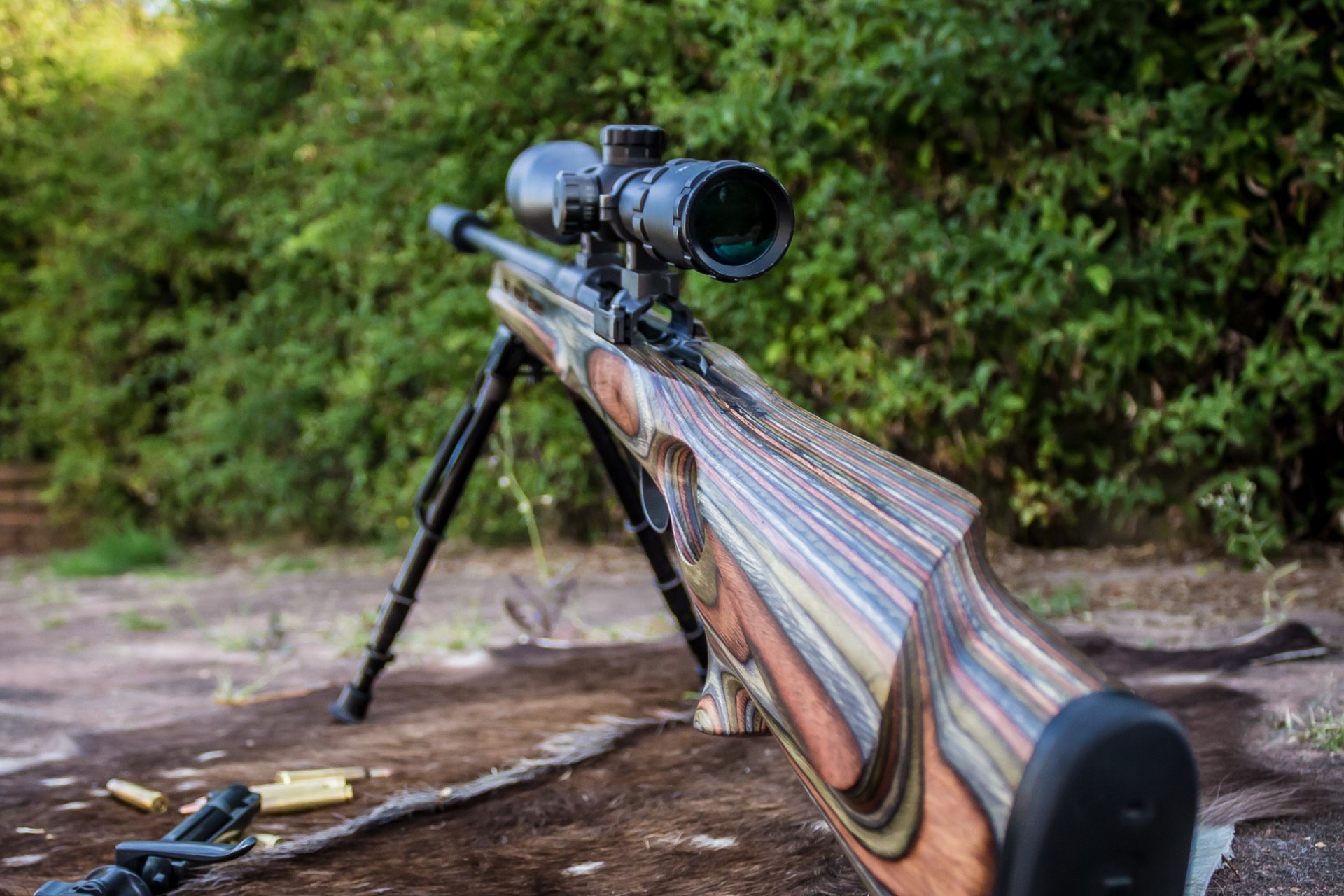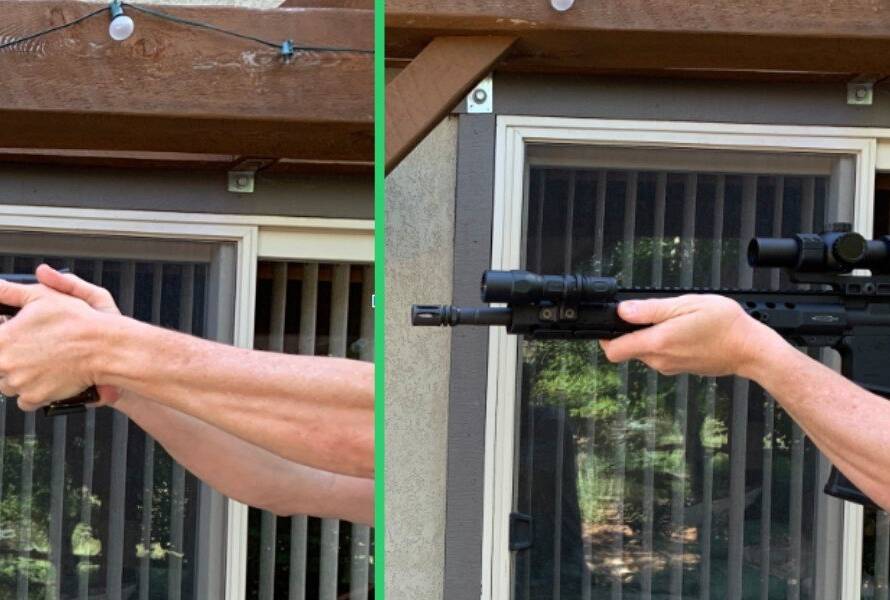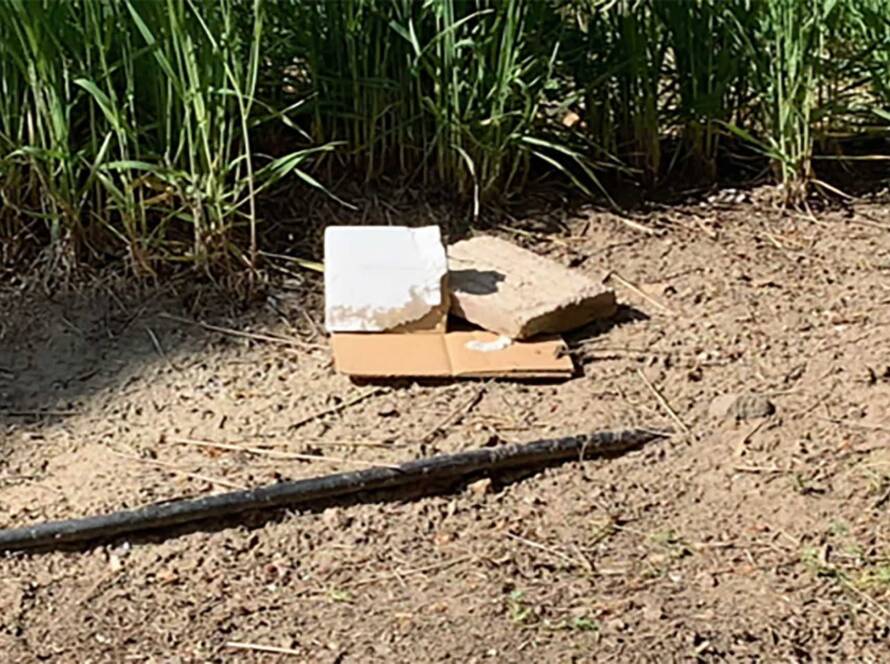Whether you’re new to rifle shooting or you’re an experienced marksman, a good rifle scope can make all the difference. A good scope gives you a clear idea of where the round will hit, allows you to see further than you normally would, which gives you the ability to hit faraway targets with startling accuracy.
Rifle scopes are complex pieces of equipment. If you don’t know how to use them and maintain them, you can damage your optic or waste countless rounds trying to sight it in. In this article, we’ll go over how to use and maintain a rifle scope so you can use your optic for years to come.
1. Determining a Scope’s Information
If you’ve ever seen or read about rifle scopes, you’ve probably seen a bunch of numbers that describe the scope. These numbers might not seem important, but they actually provide critical information about the scope and its capabilities.
The numbers on scopes will usually take this format: 1-4x24mm. The first set of numbers describe the magnification, or power, of the scope. In this example, “1-4” means that the scope provides magnification from 1 power to 4 power.
The term “4 power” means that the scope magnifies an object to four times its original size in the scope. The number after the “x” refers to the diameter of the exit pupil. In this example, “24mm” means that the exit pupil has a diameter of 24 millimeters.
2. Proper Mounting Is Critical
When it comes to using a scope, mounting the scope is probably the most important part of the process. Although mounting a scope isn’t difficult, if it isn’t done correctly, it will make your optic difficult to use.
When you fire or carry your rifle along, there are natural vibrations that go through the body of the rifle. If your scope isn’t mounted, your scope may move and shift during these vibrations. This can cause your scope to be misaligned and make your rifle effectively inaccurate.
Make sure your scope is mounted and secure to your rifle before firing it to ensure your point of aim isn’t changing.
3. Different Kinds of Optics
There are two different types of optics: telescopic sights and reflector sights. Telescopic sights are referred to as scopes and use magnification to make distant targets visible and easier to hit. These optics are usually adjustable and have marks and features to help shooters adjust their shots.
Reflector sights, or “reflex” sights, provide a reflected point of aim and are most useful for close-quarters shooting. The single point of aim is usually a red dot in the middle of the scope. This makes it easy to see and acquire close range targets while putting accurate rounds on target.
4. Protect Your Rifle Scope
Rifle scopes are generally pretty durable pieces of equipment. They are meant to be banged around during combat or hunting, so they won’t break easily. However, gun owners can easily damage their rifle scope if they aren’t careful.
Scopes have delicate lenses that can easily be broken or scratched. To protect your scope lenses, you should use lens covers. These cover the ends of your scope to prevent any dirt from entering it and protects your scope lens from being scratched or damaged.
5. Sighting In Your Scope
When you mount your scope on your rifle, it does not mean that it will hit the target immediately. Once your scope has been mounted, you need to sight it in using the knobs on the side and top of the scope.
The knob on the side shifts the point of aim left or right, while the knob on top shifts the point of aim up or down. To sight in your scope, set a target at a consistent distance away, such as 50 meters. Once the target is set, fire 5 rounds, each with the crosshairs as close to the center as possible.
Once the shots have been fired, check where they hit on the target. They should all be in a consistent group. The position of this bullet group in relation to the center will give you the adjustments you need to make.
If the group is low and left, you need to adjust your scope up and to the right. Repeat this process until your scope has been sighted in.
6. Use the Right Optic for the Right Purpose
There are rifle scopes in many different price ranges with many different uses. You need to pick the right scope for your needs if you want the best experience. Choosing a scope that has too much magnification, or too little, will affect your shooting and your performance.
Make sure to pick a scope that will fit your needs. For example, if you don’t plan on shooting past 200 meters, you won’t need a very high power scope. However, if you plan on consistently shooting past 1000 meters, you’ll need a high power scope that has the accessories you need.
If you plan on doing close-range shooting, a reflex optic or a lower-power scope, such as a 1-4 power scope, will be more than enough to meet your needs.
7. A Good Scope Doesn’t Guarantee Good Shooting
Just because you bought a top-of-the-line scope doesn’t mean that you will hit your shots. Not only does a scope need to be mounted, but it also requires practice to use correctly.
When shooting, there are a number of factors that have an impact on the placement of the shot. Between trigger pull, body position, and breathing, there are many things that have to happen for you to fire an accurate shot.
Getting a great optic is certainly part of the puzzle, but practice will help you learn how to use your optic. It will also give you the experience you need to use your optic to its full potential and hit those long-range shots.
Get the Best Rifle Scope for Your Rifle
Now that you know more about how to use and maintain a rifle scope, you can get the best possible scope for your rifle. Make sure you do plenty of research on which optic is right for you to help you build the best combination of rifle and scope possible.





